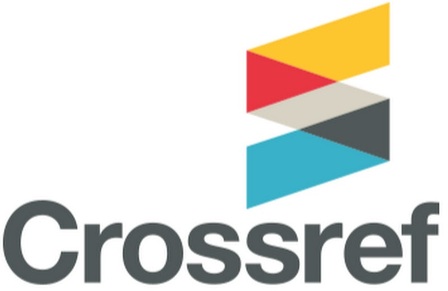Effect of relationship quality on loyalty: the moderating role of personality traits among young fashion retail customer in Indonesia
(1)
(2) Universitas Gadjah Mada
(*) Corresponding Author
Abstract
Keywords
Full Text:
PDFReferences
Adjei, Mavis T., and Melissa N. Clark. 2010. Relationship Marketing in A B2c Context: The Moderating Role of Personality Traits. Journal of Retailing and Consumer Services, 17 (1), 73-39.
Altman, Irwin, and Dalmus Taylor. 1973. Social Penetration: The Development of Interpersonal Relationships. New York: Holt, Rinehart, and Winston.
Berry, Leonard L. 1995. Relationship Marketing of Services – Growing Interest, Emerging Perspectives. Journal of the Academy of Marketing Science, 23 (4), 236–245.
Bolton, Ruth N., Lemon, Katherine N., and Verhoef, Peter C., 2004. The Theoretical Underpinnings of Customer Asset Management. Journal of the Academy of Marketing Science, 32 (3), 271–292.
BPS. 2018. Pertumbuhan Ekonomi Indonesia Tahun 2018 Lebih Tinggi dari Tahun 2017. Retrieved from Badan Pusat Statistik: https://www.bps.go.id/pressrelease/2019/02/06/1619/ekonomi-indonesia-2018-tumbuh-5-17-persen.html
BPS. Pertumbuhan Ekonomi Indonesia Tahun 2018 Lebih Tinggi dari Tahun 2017. 2018. https://www.bps.go.id/pressrelease/2019/02/06/1619/ekonomi-indonesia-2018-tumbuh-5-17-persen.html.
Christy, Richard, Gordon Oliver, and Joe, Penn. 1996. Relationship Marketing In Consumer Markets. Journal of Marketing Management, 12 (1–3), 175–187.
Crosby, Lawrence A., Kenneth R. Evans, and Deborah Cowles. 1990. Relationship Quality in Services Selling: An Interpersonal Influence Perspective. Journal of Marketing, 54 (3), 68–81.
De Wulf, Kristof, Gaby Odekerken-Schroder, Dawn Iacobucci. 2001. Investments in Consumer Relationships: Cross Country and Cross Industry Exploration. Journal of Marketing, 65 (October), 33–50.
Evans, J.R., and R. L. Laskin. 1994. The Relationship Marketing Process: A Conceptualization and Application. Industrial Marketing Management, 23, 439-452.
Gummesson, E. 1996. Relationship Marketing and Imaginary Organizations: A Synthesis. European Journal of Marketing, 30 (2), 31-44.
Gwinner, K., D. Gremler, M. J., and Bitner. 1998. Relational Benefits in Services Industries: The Customer’s Perspective. Journal of Academy of Marketing Science, 31 (2), 109–126.
Hamer, Dean H., and Peter Copeland. 1998. Living With Our Genes. Doubleday.
Hennig-Thurau, T., and Alexander Klee. 1997. The Impact of Customer Satisfaction and Relationship Quality on Customer Retention: A Critical Reassessment and Model Development. Psychology and Marketing, 14 (8), 737-764.
Hennig-Thurau, Thorsten, Kevin P. Gwinner, and Dwayne D. Gremler. 2002. Understanding Relationship Marketing Outcomes. Journal of Service Research, 4 (3), 230–247.
Hirschman, E., 1980. Innovativeness, Novelty, Seeking, and Consumer Creativity. Journal of Consumer Research, 7 (3), 238–295.
Hirschman, E.C., and Stern, B.B., 2001. Do consumers’ genes influence their behavior? Findings on novelty seeking and compulsive consumption. ACR North American Advances.
Holmlund, M. 2001. The D&D Model: Dimensions and Domains Of Relationship Quality Perceptions. The Service Industries Journal, 1 (3), 13-36.
Jarvelin, A., and U. Lehtinen. 1996. Strategic Integration in Industrial Distribution Channels: Managing the Interfirm Relationship as A Strategic Asset. Journal of the Academy of Marketing Science, 27 (1), 4-18.
Kahn, B.E. 1995. Consumer Variety-Seeking Among Goods and Services. Journal of Retailing and Consumer Services, 2 (3), 139-148.
Kemenperin. 2018. Perluas Pasar Industri Fesyen Dalam Negeri Lewat Indonesia Fashion Week 2018. Retrieved from Kementerian Perindustrian Republik Indonesia: http://www.Kemenperin.go.id/artikel/19010/Perluas-Pasar-Industri-Fesyen-Dalam-Negeri-Lewat-Indonesia-Fashion-Week-2018
Kemenperin. Perluas Pasar Industri Fesyen Dalam Negeri Lewat Indonesia Fashion Week 2018. 2018. https://kemenperin.go.id/artikel/19010/Perluas-Pasar-Industri-Fesyen-Dalam-Negeri-Lewat-Indonesia-Fashion-Week-2018.
de Kerviler, G., and Rodriguez, C.M., 2019. Luxury Brand Experiences and Relationship Quality for Millennials: The Role of Self-Expansion. Journal of Business Research, 102, 250-262.
Kumar, V, and Denish Shah. 2004. Building and Sustaining Profitable Customer Loyalty for The 21st Century. Journal of Retailing, 80 (4), 317–330.
Liao, H., and A. Chuang. 2007. Transforming Service Employees and Climate: A Multilevel, Multisource Examination of Transformational Leadership in Building Long-Term Service Relationships. Journal of Applied Psychology, 92(4), 1006.
Mega, A. 2017. Perkembangan Trend Fashion di Indonesia. Retrieved from Kompasiana: https://www.kompasiana.com/annisamega/ perkembangan-trend-fashion-di-indonesia_588321f3cc92731105931d89 (January 21)
Menon, S., and B. E. Kahn. 1995. The Impact of Context on Variety Seeking in Product Choices. Journal of Consumer Research, 22 (3), 285–295.
Midgley, D.F., and Dowling, G.R., 1978. Innovativeness: The Concept and Its Measurement. Journal of Consumer Research, 4 (4), 229-242.
Odekerken-Schröder, G., De Wulf, K., and Schumacher, P., 2003. Strengthening Outcomes of Retailer–Consumer Relationships: The Dual Impact of Relationship Marketing Tactics and Consumer Personality. Journal of Business Research, 56 (3), 177-190.
Olsen, Janeen E., Tom Atkin, Liz Thach, and Steve S. Cuellar. 2015. Variety Seeking by Wine Consumers in The Southern States of The US. International Journal of Wine Business Research, 260-280.
Palmatier, Robert W., Rajiv P. Dant, Dhruv Grewal, and Kenneth R. Evans. 2006. Factors Influencing The Effectiveness of Relationship Marketing: A Meta-Analysis. Journal of Marketing, 70 (4), 136–153.
Raju, P.S. 1980. Optimum Stimulation Level: Its Relationship to Personality, Demographics, and Exploratory Behavior. Journal of Consumer Research, 7 (3), 272–282.
Reimer, Lars. 2018. 5 Ways to Increase Customer Loyalty in The Competitive Fashion Industry. Retrieved from Minodes: https://www.minodes.com/blog/5-ways-to-increase-customer-loyalty-in-the-competitive-fashion-industry/
Reynolds, K.E., and S. E. Beatty. 1999. Customer Benefits and Company Consequences of Customer-Salesperson Relationships in Retailing. Journal of Retailing, 75 (1), 11-31.
Schiffman, Leon G, and Leslie Lazar Kanuk. 2004. Consumer Behavior. Pearson Educational International, New York.
Sharp, Byron., and Anne Sharp. 1997. Loyalty Programs snd Their Impact on Repeat- Purchase Loyalty Patterns. International Journal of Research in Marketing, 14 (5), 473–486.
Sheth, Jagdish N. 1996. Relationship Marketing: Frameworks and Concepts. International Conference on Relationship Marketing: Development, Management, and Governance of Relationships 1996, March 29–31, Berlin, Germany.
Statista. 2019. Indonesia’s Fashion Market Revenue. Retrieved from Statista: https://www.statista.com/outlook/244/120/fashion/indonesia#market-revenue
Statista. Indonesia’s Fashion Market Revenue. 2019. https://www.statista.com/outlook/244/120/fashion/indonesia#market-revenue.
Trivedi, M. 1999. Using Variety-Seeking-Based Segmentation to Study Promotional Response. Journal of the Academy of Marketing Science, 27 (1), 37-49.
Tumangger, Evita Lorenza. 2019. Interview by Tengku Assad Diari Harumy.
Verhoef, Peter C., Philip H. Franses, and Janny Hoekstra. 2002. The Effect of Relational Constructs on Customer Referrals and Number of Services Purchased from A Multiservice Provider: Does Age of Relationship Matter? Journal of the Academy of Marketing Science, 30 (3), 202–216.
Widyosiswoyo, Hariwijaya Soewandi. 1991. Ilmu Alamiah Dasar. Jakarta: Ghalia Indonesia, 211–213. ISBN 979-421-128-7
DOI: https://doi.org/10.24123/jmb.v20i1.505
Article Metrics
Abstract view : 707 timesPDF - 181 times
Refbacks
- There are currently no refbacks.
Copyright (c) 2021 Assad Diari Harumy, Rokhima Rostiani

This work is licensed under a Creative Commons Attribution 4.0 International License.
This work is licensed under a Creative Commons Attribution 4.0 International License. ISSN: 1412-3789. e-ISSN: 2477-1783.
 |  |  |  |
 |  |  |  |



